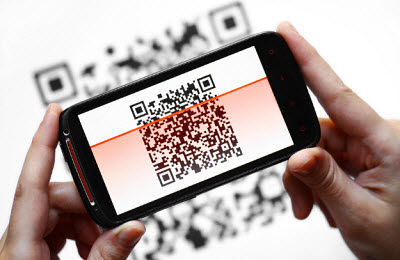The U.K. firm is hoping to enhance the information available on grave stones.
Since the dawn of time, humankind has wondered about the mysteries related to death and since the beginning of society, efforts have been made to try to memorialize those who have died, with QR codes being the latest effort in that regard.
These quick response barcodes are being used by a growing number of cemeteries on their grave markers.
In this effort, a company called Hyphenalia, from Tonbridge, Kent, U.K. is now working to add QR codes to gravestones and murals, so that people who are visiting these grave markers will be able to learn more about the deceased individual who is buried or memorialized there. The company is owned by a woman named Wendy Nash.
This use of QR codes is appearing on a growing number of grave sites across the United States, and the world.
 Headlines have been made from a number of American cemeteries that are now offering QR codes as an added feature on their gravestones, but they are also appearing in places such as China, and even in Wales at a cemetery for war veterans.
Headlines have been made from a number of American cemeteries that are now offering QR codes as an added feature on their gravestones, but they are also appearing in places such as China, and even in Wales at a cemetery for war veterans.
According to Nash, she came up with her own idea for using QR codes on gravestones “because I have always had a fascination with headstones and eventually I thought to myself ‘is that it? Am I just going to be a name on granite?” She pointed out that for most people, a name and a date is all that is available to tell visitors about the deceased individuals to whom the grave markers are making reference. She feels that it is “a shame and a wasted opportunity.”
It is the hope of Nash that this will provide future generations the ability to avoid the current struggle with making sure that the achievements of ancestors are not forgotten. The QR codes provide families with the ability to use the internet to share a much larger amount of information about their deceased loved ones than their names, the years in which they were alive, and a possible additional word or two.
Some companies and techniques are working to expand the use of shopping over this channel.
Mobile commerce is taking off very rapidly but, at the same time, the number of consumers who are using the channel are exceptionally low compared to the number who shop in person or who buy over the internet on their laptops and desktops.
There are a number of reasons that people have hesitated to turn to their smartphones to buy.
People frequently hold back from shopping via smartphone and tablet because mobile commerce often comes with slow internet speeds, improperly optimized websites, long page load times, and concerns over the security of payments. Despite the fact that online shopping no matter where the consumer may be provides a tremendous opportunity for convenience, variety, and price comparisons but even the best apps and websites often lead individuals to learn about a product and then purchase it on a desktop or in a brick and mortar store instead of buying over that channel.
However, many mobile commerce using companies are working to boost the numbers.
 The latest sales data from Capgemini and IMRG have shown that from the second quarter of last year to the same quarter this year, there was an increase in mobile commerce sales from 11.6 percent of online purchases to 23 percent.
The latest sales data from Capgemini and IMRG have shown that from the second quarter of last year to the same quarter this year, there was an increase in mobile commerce sales from 11.6 percent of online purchases to 23 percent.
There are many reasons that consumers are still hesitating to buy over mobile commerce. They include the following:
• Reduced internet performance that doesn’t meet the expectations of consumers.
• Heavy page weight that leads to increased load times.
• Redirection issues
• Security concerns
A mobile commerce survey in which 728 people participated showed that among all of the various tasks that people complete using their smartphones or tablets, “reserve and collect” services, and “shopping online” were still lower than many companies would hope. Among those respondents, only 9 percent shopped online and 27 percent used reserve and collect services (where an item is ordered to be put aside in a store and the customer picks it up in person). This suggests to many that a “click to collect” service may be more appealing to consumers than actually completing the order to be shipped online by way of a small screen device.
 Headlines have been made from a number of American cemeteries that are now offering QR codes as an added feature on their gravestones, but they are also appearing in places such as China, and even in Wales at a cemetery for war veterans.
Headlines have been made from a number of American cemeteries that are now offering QR codes as an added feature on their gravestones, but they are also appearing in places such as China, and even in Wales at a cemetery for war veterans.
 The latest sales data from Capgemini and IMRG have shown that from the second quarter of last year to the same quarter this year, there was an increase in mobile commerce sales from 11.6 percent of online purchases to 23 percent.
The latest sales data from Capgemini and IMRG have shown that from the second quarter of last year to the same quarter this year, there was an increase in mobile commerce sales from 11.6 percent of online purchases to 23 percent.